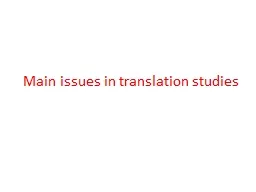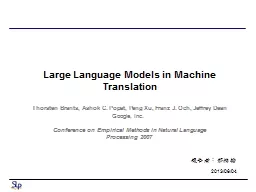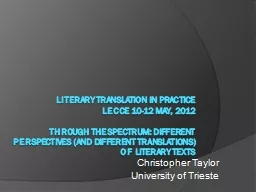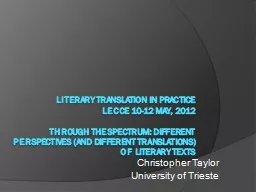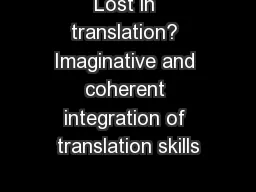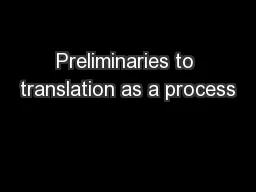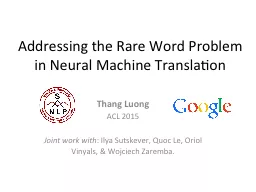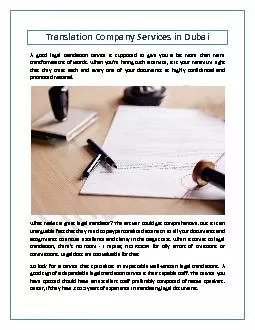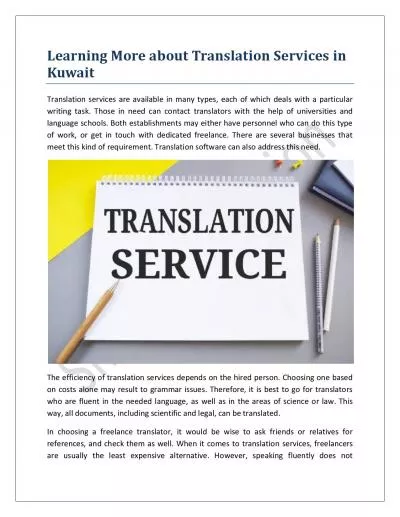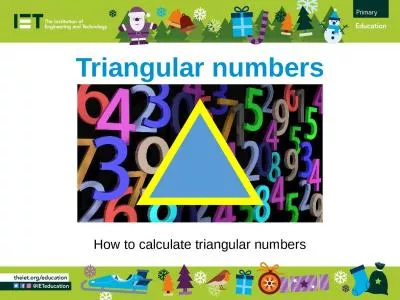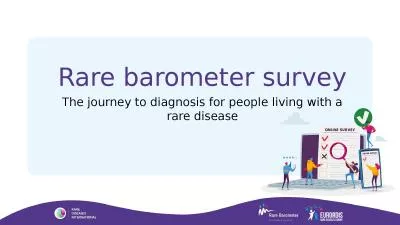PPT-Triangular Architecture for Rare Language Translation
Author : hirook | Published Date : 2020-08-29
Shuo Ren 12 Wenhu Chen 3 Shujie Liu 4 Mu Li 4 Ming Zhou 4 and Shuai Ma 12 1 SKLSDE Lab Beihang University China 2 Beijing Advanced Innovation Center for Big
Presentation Embed Code
Download Presentation
Download Presentation The PPT/PDF document "Triangular Architecture for Rare Languag..." is the property of its rightful owner. Permission is granted to download and print the materials on this website for personal, non-commercial use only, and to display it on your personal computer provided you do not modify the materials and that you retain all copyright notices contained in the materials. By downloading content from our website, you accept the terms of this agreement.
Triangular Architecture for Rare Language Translation: Transcript
Download Rules Of Document
"Triangular Architecture for Rare Language Translation"The content belongs to its owner. You may download and print it for personal use, without modification, and keep all copyright notices. By downloading, you agree to these terms.
Related Documents


